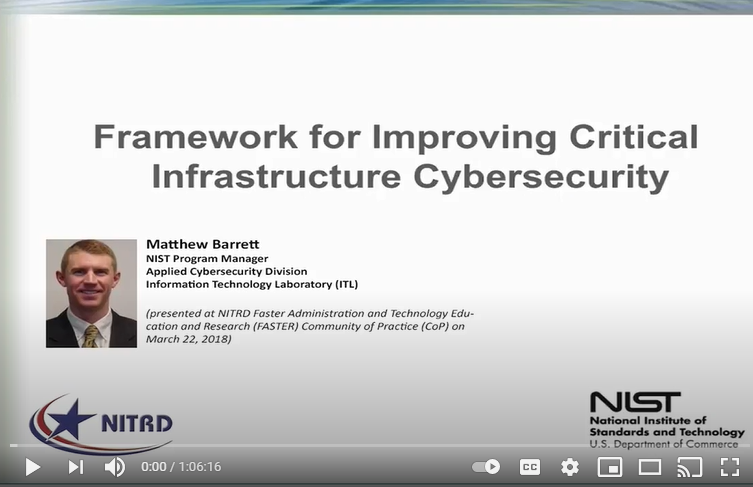Video: https://www.youtube.com/watch?v=dFXNzPxXU6A&feature=youtu.be
About the Speaker:
Mr. Barrett and his team are responsible for establishing and maintaining relationships with both private and public sector (Cybersecurity) Framework stakeholders. Mr. Barrett works through those relationships to provide perspective and guidance, as well as gather input on use and evolution of the Framework. To fulfill stakeholder needs, Mr. Barrett also collaborates with a variety of NIST cybersecurity programs.
Matt is known for his leadership of NIST’s Security Content Automation Protocol program and support of the Office and Management and Budget’s Federal Desktop Core Configuration initiative (predecessor to U.S. Government Consensus Baseline). Owed to that work, Matt was a recipient of a Department of Commerce Gold Medal Award for distinguished achievement in federal service.
Previous to NIST and over the past decade, Matt has served in various executive roles including roles such as president and chief executive officer.
Abstract:
With increasing reliance on technology, businesses are increasingly transitioning from trust to digital trust models. This transition has been hindered by the lack of a common language for understanding, managing, and expressing cybersecurity risk inside and outside of organizations. The Framework for Improving Critical Infrastructure Cybersecurity (“The Framework”) was published in February 2014 to provide a common cybersecurity risk management language, as well as a common approach. The Framework can be used to help identify and prioritize actions for reducing cybersecurity risk, and is a tool for aligning policy, business, and technological approaches to managing that risk.


